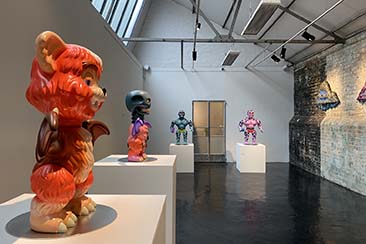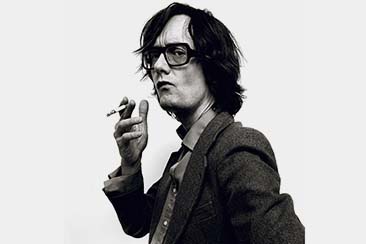As part of the major Duchamp Season Dancing Around Duchamp, the Barbican Art Gallery opened The Bride and the Bachelors yesterday, a major exhibition that will run until 9th June.
Exploring the beginnings of contemporary art as an ironic revolt against what Marcel Duchamp called ‘Retinal Art’, The Bride and the Bachelors – Duchamp with Cage, Cunningham, Rauschenberg and Johns is the first of its kind to display Duchamp’s multi-disciplinary art along side four modern masters whom he influenced. Featuring musician John Cage, famed for his 4’33” composition, Merce Cunnigham – the American dancer and choreographer – mixed-media artist Robert Rauschenberg, and Jasper Johns, famed for his Flag paintings associated with Neo-Dadaism, the exhibitions spans the atrium and upper levels of the grey and echoey gallery, where you’re instantly immersed thanks to mise-en-scène by Philippe Parreno.
The soundscape acts as your guide and mood-influencer, as you slowly move your way around. The exhibition features twenty-five works by Duchamp, including the infamous Fountain and the large scale The Bride Stripped Bare by Her Bachelors (The Large Glass); upon which this exhibition is based. Curated by Carlos Basualdo in collaboration with Erica F. Battle, there is a definite and intentional mood of the ethereal. The low lighting and the sound of John Cage’s Dream (amongst others) resonate throughout the space ‘activating time and movement within the exhibition’.
As part of the physical pieces on show, movement is an integral part, with live dance performances of Cunningham’s choreography. On Thursday evenings and weekends you can watch the live dance component curated by former Merce Cunningham Dance Company dancer Jeannie Steele. The Bride and the Bachelors is a fascinating insight into the history of contemporary art, especially for those who moved by Duchamp’s attitudes to art. The French icon’s anti-art stance, and dislike of ‘visual’ art, is a fascinating journey by one of the world’s most celebrated artists; constantly re-defining his output he once famously said “I force myself to contradict myself in order to avoid conforming to my own taste.” Intentionally challenging the trend, or even a movement (Surrealism and Dadaism) he refused to align with any.
Cage, Cunningham, Rauschenberg and Johns too defied the way they created their own art thanks to Duchamp. Not challenge for challenge sake, but more to experiment and to question what is art and how we see it. Anything can be art when presented as art, even a bicycle wheel on a stool.
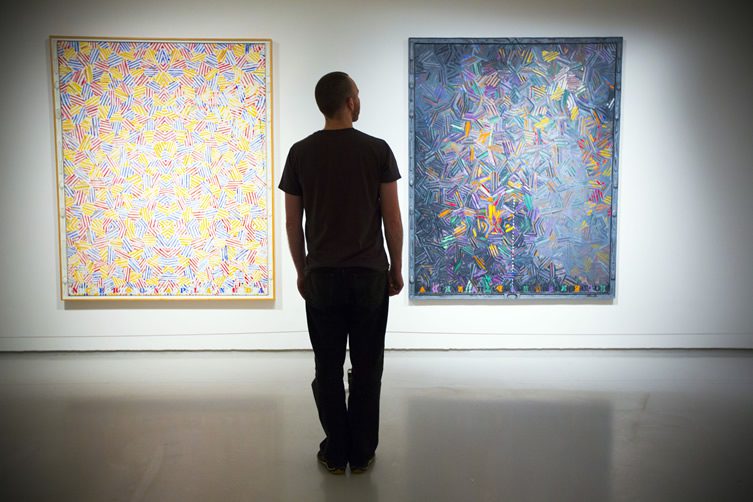
Dancers on a Plane (1979)
by Jasper Johns
The Bride and the Bachelors
Duchamp with Cage, Cunningham,
Rauschenberg and Johns
© Felix Clay 2013.
Courtesy of Barbican Art Gallery
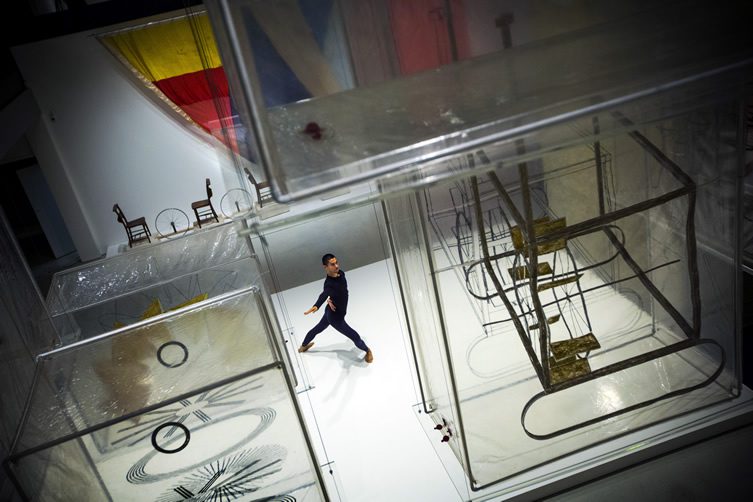
The Bride and the Bachelors
Duchamp with Cage, Cunningham,
Rauschenberg and Johns
© Felix Clay 2013.
Courtesy of Barbican Art Gallery
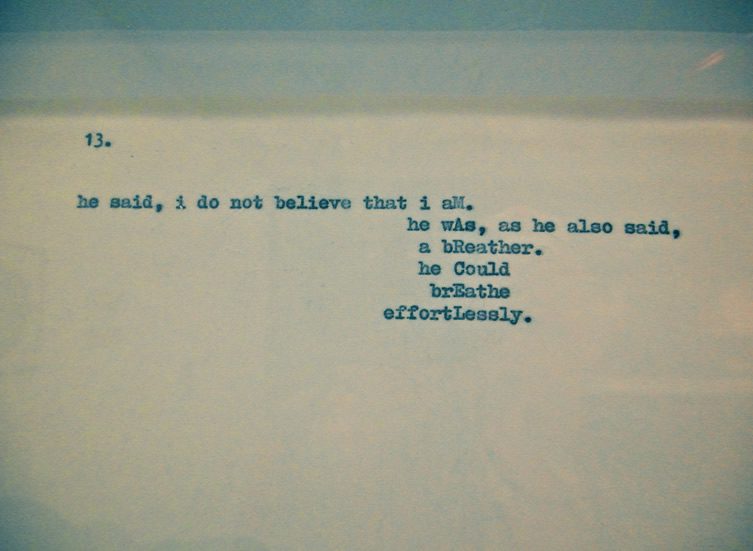
The Bride and the Bachelors
Duchamp with Cage, Cunningham,
Rauschenberg and Johns
Photo © We Heart
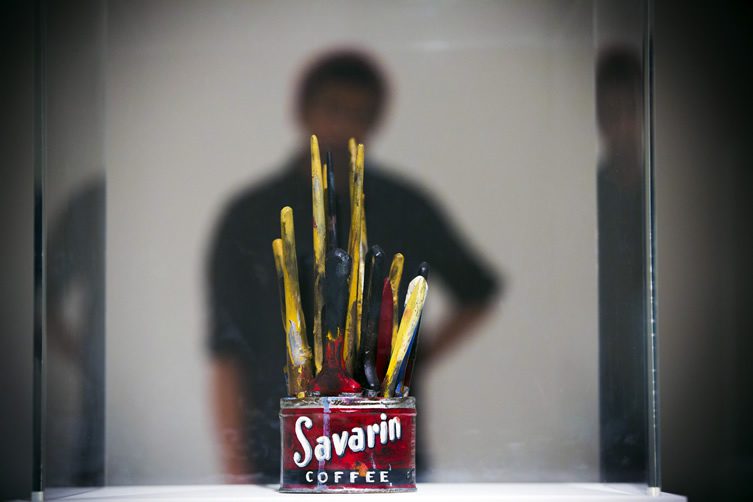
Painted Bronze (1960)
by Jasper Johns
The Bride and the Bachelors
Duchamp with Cage, Cunningham,
Rauschenberg and Johns
© Felix Clay 2013.
Courtesy of Barbican Art Gallery
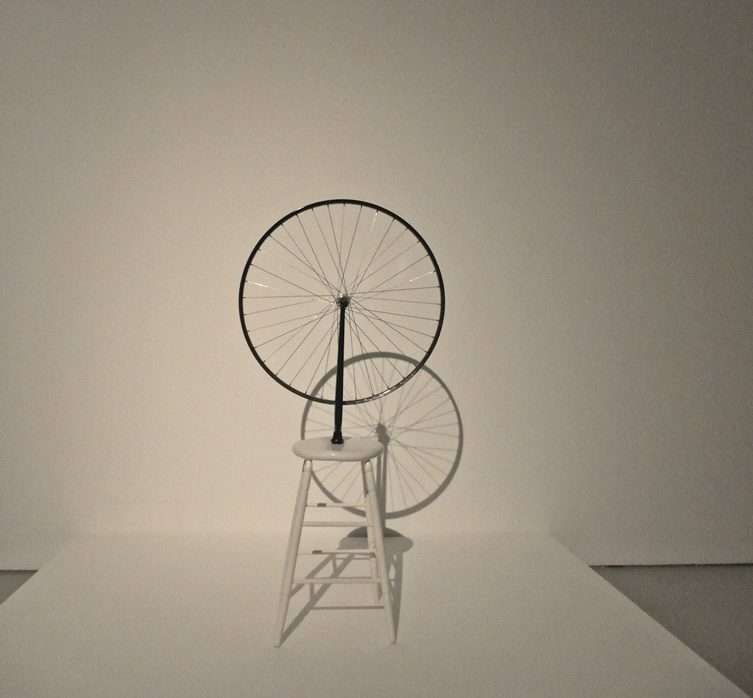
The Bride and the Bachelors
Duchamp with Cage, Cunningham,
Rauschenberg and Johns
Photo © We Heart
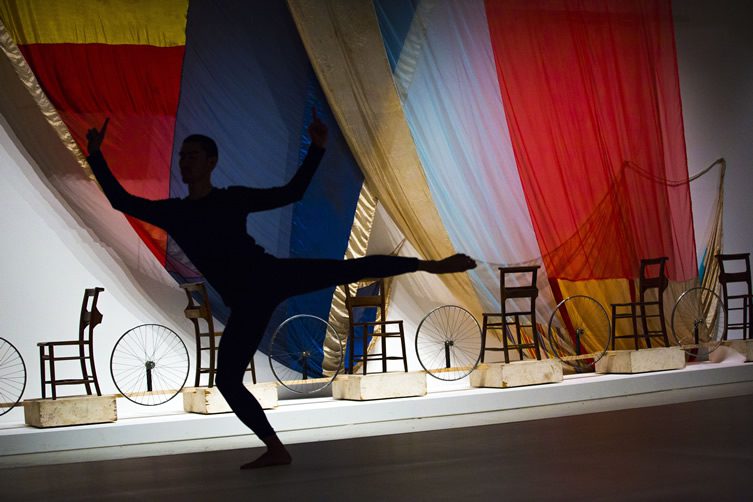
Dancers perform Merce Cunningham choreography
The Bride and the Bachelors
Duchamp with Cage, Cunningham,
Rauschenberg and Johns
© Felix Clay 2013.
Courtesy of Barbican Art Gallery
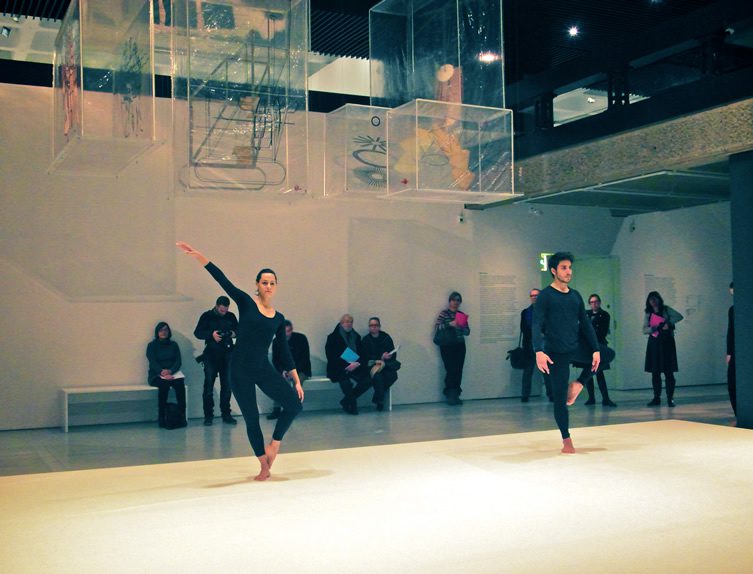
The Bride and the Bachelors
Duchamp with Cage, Cunningham,
Rauschenberg and Johns
Photo © We Heart
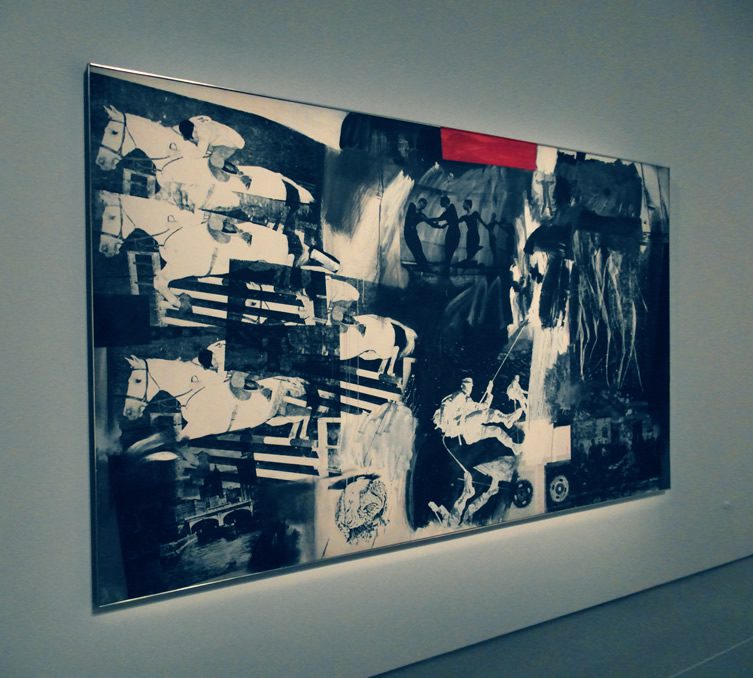
Express (1963)
by Robert Rauschenberg
The Bride and the Bachelors
Duchamp with Cage, Cunningham,
Rauschenberg and Johns
Photo © We Heart
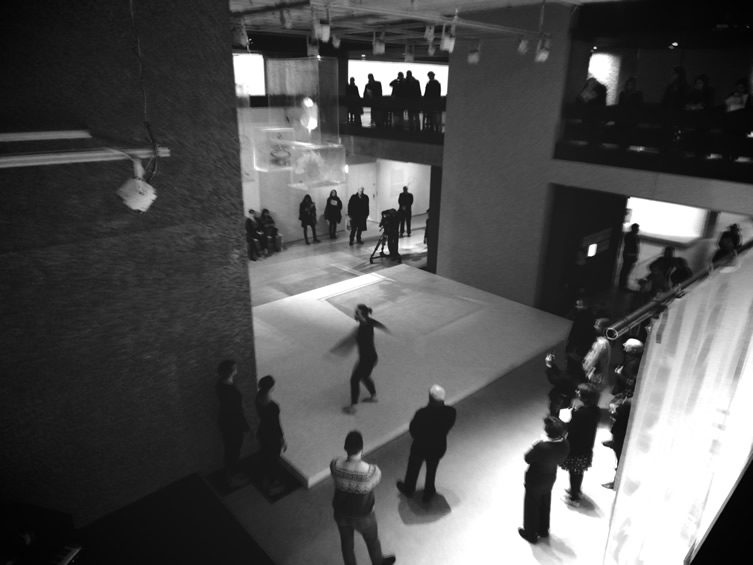
The Bride and the Bachelors
Duchamp with Cage, Cunningham,
Rauschenberg and Johns
Photo © We Heart
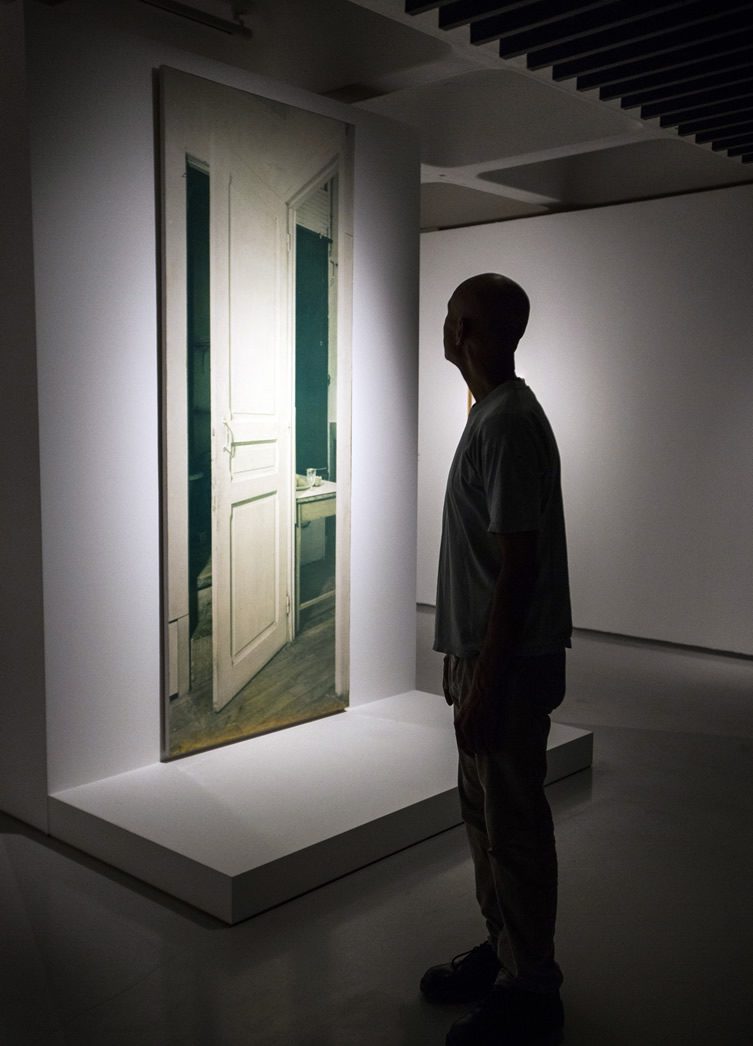
Door: 11, rue Larrey (replica) (1964)
by Marcel Duchamp
The Bride and the Bachelors
Duchamp with Cage, Cunningham,
Rauschenberg and Johns
© Felix Clay 2013.
Courtesy of Barbican Art Gallery
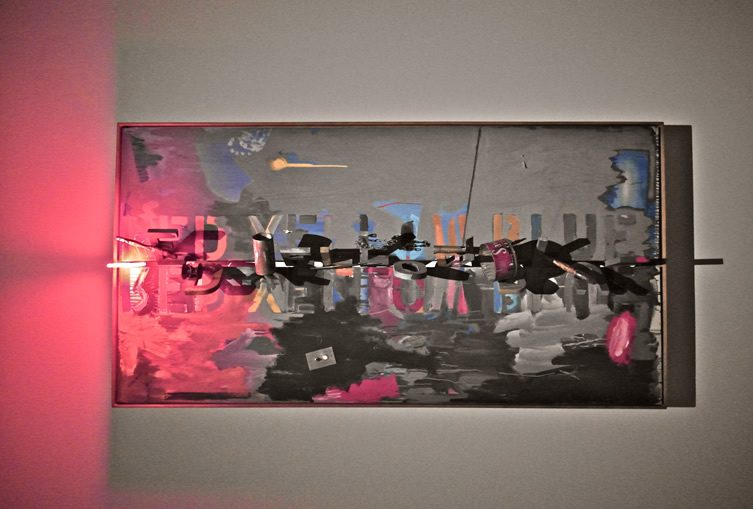
The Bride and the Bachelors
Duchamp with Cage, Cunningham,
Rauschenberg and Johns
Photo © We Heart
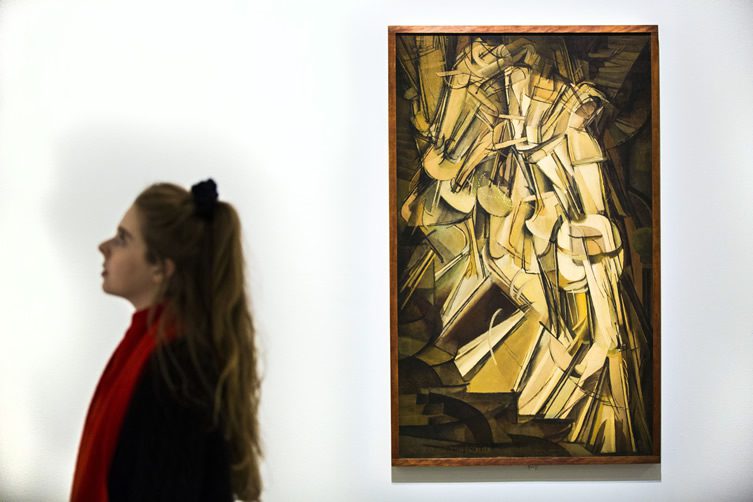
Nude Descending a Staircase (No. 2) (1912)
by Marcel Duchamp
The Bride and the Bachelors
Duchamp with Cage, Cunningham,
Rauschenberg and Johns
© Felix Clay 2013.
Courtesy of Barbican Art Gallery


